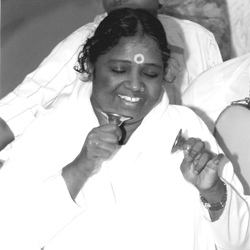Music Group

“Children, sing from the depth of your hearts. Let the heart melt in prayer. The joy of singing the Lord’s name is unique. This bhajan is for us to pour out all our heart’s accumulated dirt. Leave aside all shyness and open your hearts to God.” -Amma
Please send an email to music@la.macenters.org if you are interested in attending upcoming Music Practices.
===================================
Welcome to Amma’s LA Music Group
Amma’s LA Satsang Music Group gathers those with a sincere desire to express their devotion to Amma or their chosen aspect of God through music.
To find out more about practices or how to get on the email list, please email music@la.macenters.org
SOME IMPORTANT POINTS FOR BHAJANS
These are some points that have come up over the years.
Goals
- Sing confidently. This happens when people know the pronunciation of the words and the phrasing.
- Confidence also comes when everyone knows the beat and structure of the song.
- Get used to singing as a group, so all voices blend together and everyone is in sync.
- Find a number of people who are interested to learn tambourine and bells and are willing to practice, so we have tambourine & bell players in satsang.
- If you want to practice a song, try to learn the pronunciation and phrasing before coming to practice – please bring the tape or CD also – this way, you know the correct pronunciation and we don’t have to start from scratch.
- Mayalalam songs should be gone over with a native Malayali speaker, like Annapurna.
Who sets the tempo?
- The singer
- The harmonium follows the singer
- The tabla follows the harmonium player
- The bells and tambourine and everyone else follows the tabla player
Startup sequence
- This is the sequence: The singer starts the bhajan, harmonium comes in, then tabla, and last, the bells and tambourine.
- Same thing happens during the next speeds. Bells and tambourine do not start before singer and tabla. Otherwise there can be a “race” between the instruments.
Be conscious of the beat
- When leading a bhajan, be “conscious” of the beat. Do not just think what you are going to sing next. Be aware of the bass drum beat – stay with it.
- Lead singers: try to set three distinct speeds. Many people start the bhajan too slow, especially if they don’t know it well. It drags and sounds shaky. The next speed is then way too fast and the final speed is so fast, that the whole bhajan breaks down.
Start with a reasonable tempo
- Start with a reasonable basic tempo, move to a medium tempo, and then a reasonably fast third tempo.
Speeding up can be an issue
- Singers, background singers and drummers get excited and will often speed up the bhajan in a continuous ramp. This makes the bhajan break down and come to a crashing halt.
- Once a fast beat is set, sing the chorus at least couple of times with a steady beat, then move up to a faster constant beat and again sing the chorus a couple of times. Typically, the verses are not sung in the very fast beats, only the chorus.
- This is the part (the fast section) of the song that can lift people higher, but it frequently accelerates too fast in a very short time and then breaks down completely and comes to a grinding halt, because the drummers and singers can’t keep up.
- Be careful not to choose a beat that is too fast. You can always speed up again.
Mark the beat
- When you are singing during satsang, be aware of the “beat”. You should mark time with body language. Be totally aware of the bass drum beat.
Tambourine and bells are the backbone
- When you play, you should not just “play along” with the beat. Instead, “you are the beat”. You have to be confident. This can only be gained through practice.
- The key is: Keep it simple
- If you are unsure of the beat or cannot keep up, simply stop. These are loud instruments that can be heard over everything. If you play off beat, it will disrupt the whole bhajan and cause a major disturbance for everyone.
- Stopping-and-starting continuously disrupts the bhajan. Tambourine players will frequently stop-and-start without warning when they get tired or have to change positions – this disrupts the bhajan. It is a loud instrument. Try not to do frequent stop-and-starts when you change positions. Simple breaks are better than fancy breaks. Simply try to keep a steady beat.
- Be aware of the drums and each other. Try not to get spaced out and speed up.
- Always follow the drums. Please do not come in before drums start. Same thing when the bhajan steps up the speed. Please wait for the singer and drums to start before you come in.
- Bells and tambourine are the backbone of the whole bhajan.
